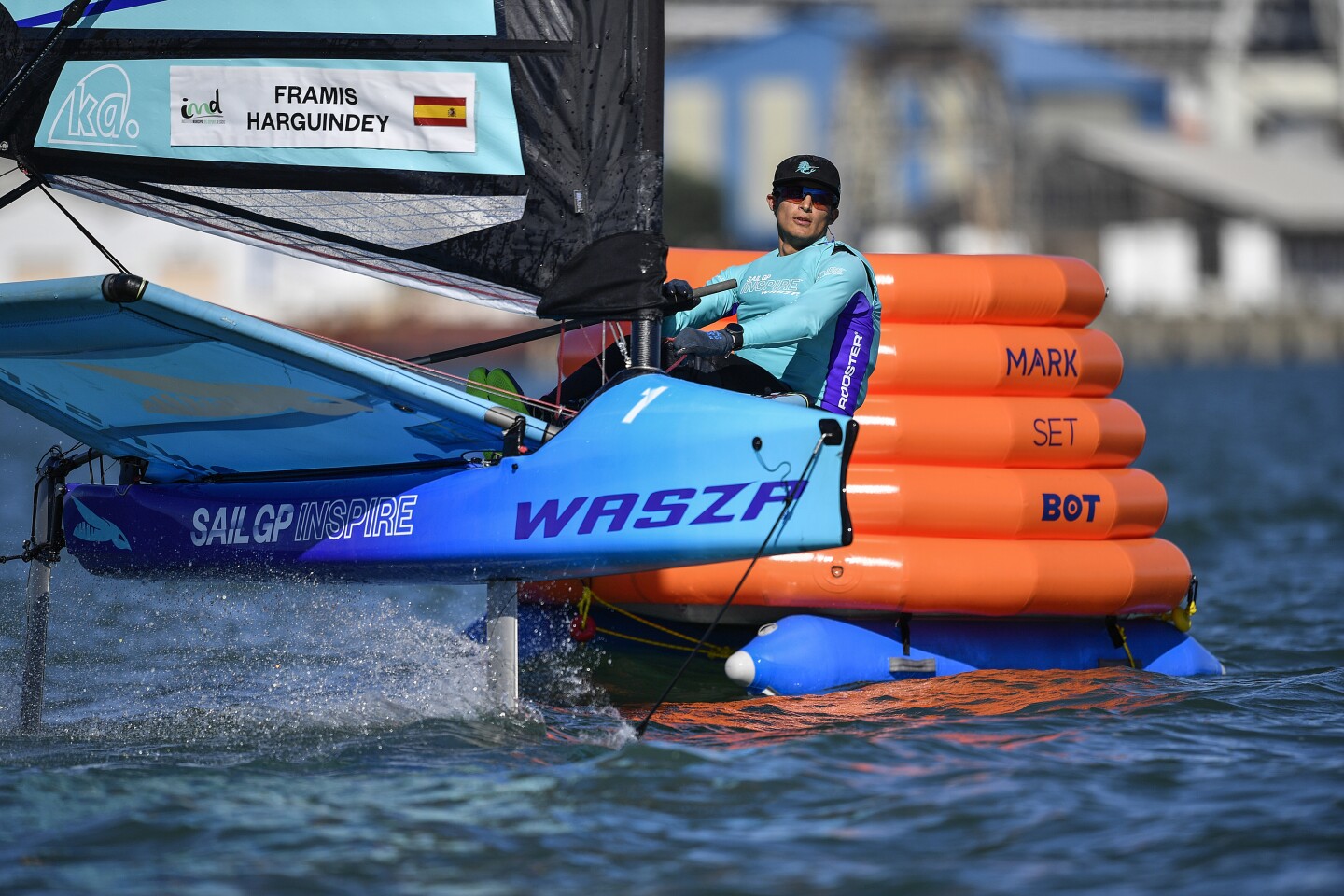MarkSetBot robotic race marker buoys have no need for an anchor
In a typical sailboat race, the course is marked with a series of buoys that have to be anchored to the seabed, and which may get pushed around by winds or currents. MarkSetBot addresses those problems, with internet-connected robotic buoys.
Each MarkSetBot unit consists of a high-visibility yellow, green or orange inflatable race marker buoy, set on a pair of inflatable pontoons.
Extending down between those pontoons is an electric motor pod, which is powered by an onboard 100-Ah lithium-ion battery. The Bots are connected to the internet via a cellular network, although they can also be remotely controlled by a nearby Bluetooth remote if a network isn’t available.
When the course is initially being marked, each MarkSetBot can either be towed out to its respective location, or instructed (via an app) to travel out to the GPS coordinates under its own power – it has a maximum speed of 4 knots (7 km/h or 5 mph). Once in place, it uses a proprietary position-keeping algorithm to stay in that location, autonomously running and steering its motor pod as needed.
MarkSetBot
According to the Detroit-based MarkSetBot company, the Bots can hold their position in winds of up to 30 knots (56 km/h or 35 mph) and waves up to 3 meters (10 ft). Under more typical conditions – 8 to 10-knot winds and 1 to 2-foot waves – one 5-hour charge of the battery should reportedly be good for approximately 24 hours of use.
The designers also state that when deflated, up to three of the Bots can fit in the back of “most sedans” with the rear seat folded down. You might need some help getting them in and out of there, though, as each one weighs 115 lb (52 kg).
Along with the remote, optional extras include an onboard wind instrument for measuring and monitoring wind speed/direction, and an app-controlled horn for signaling race starts, finishes or course changes.
MarkSetBots are already in use by a number of clients, and can either be rented for US$1,000 per Bot, leased for $350 per Bot per month, or purchased outright for $7,750 per unit.
Source: MarkSetBot
In a typical sailboat race, the course is marked with a series of buoys that have to be anchored to the seabed, and which may get pushed around by winds or currents. MarkSetBot addresses those problems, with internet-connected robotic buoys.
Each MarkSetBot unit consists of a high-visibility yellow, green or orange inflatable race marker buoy, set on a pair of inflatable pontoons.
Extending down between those pontoons is an electric motor pod, which is powered by an onboard 100-Ah lithium-ion battery. The Bots are connected to the internet via a cellular network, although they can also be remotely controlled by a nearby Bluetooth remote if a network isn’t available.
When the course is initially being marked, each MarkSetBot can either be towed out to its respective location, or instructed (via an app) to travel out to the GPS coordinates under its own power – it has a maximum speed of 4 knots (7 km/h or 5 mph). Once in place, it uses a proprietary position-keeping algorithm to stay in that location, autonomously running and steering its motor pod as needed.

MarkSetBot
According to the Detroit-based MarkSetBot company, the Bots can hold their position in winds of up to 30 knots (56 km/h or 35 mph) and waves up to 3 meters (10 ft). Under more typical conditions – 8 to 10-knot winds and 1 to 2-foot waves – one 5-hour charge of the battery should reportedly be good for approximately 24 hours of use.
The designers also state that when deflated, up to three of the Bots can fit in the back of “most sedans” with the rear seat folded down. You might need some help getting them in and out of there, though, as each one weighs 115 lb (52 kg).
Along with the remote, optional extras include an onboard wind instrument for measuring and monitoring wind speed/direction, and an app-controlled horn for signaling race starts, finishes or course changes.
MarkSetBots are already in use by a number of clients, and can either be rented for US$1,000 per Bot, leased for $350 per Bot per month, or purchased outright for $7,750 per unit.
Source: MarkSetBot
